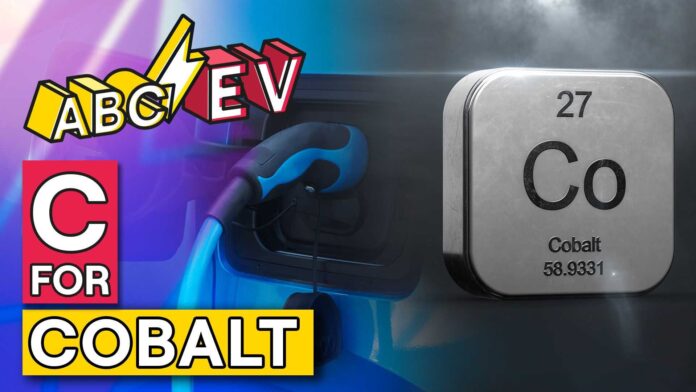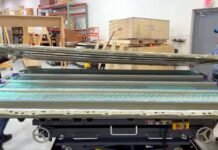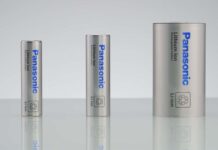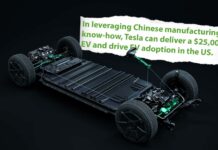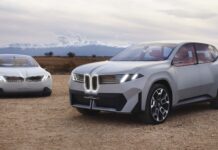[ad_1]

Hello again, and welcome back to another busy installment of the ABCs of EVs! Today, we’re picking up on where we left off on the last video in the series. We’ll be taking a look at one of the most valuable elements of EV batteries, one that garners a lot of attention. Stick around for the details!
What is Cobalt?
Let’s get the basics out of the way first…Cobalt is an element that sits in the periodic table, kind of in the upper middle right section. Sat right next to it is its brother in battery arms, Nickel. And it has tended to be a by-product of Nickel and Copper mining. It is one of the four ferromagnetic elements in the periodic table. So clear so far, eh?
Where do we get it?
Cobalt is mined in a number of countries around the world, but the main place is definitely the DRC…or the Democratic Republic of Congo. According to the United States Geological Survey, more than half of global production happened there in 2017, and more recent volumes suggest that it is around a quarter. Not surprisingly then, the DRC has about half of the world’s reserves of the valuable commodity. Australia also has significant reserves, at about 1.2 million tonnes.
What do we use it for?
We have been using Cobalt in some form for a very long time. It is crucial to the health of all animals, and is found in the vitamin B12. We have also used it in glass firing and pottery for hundreds of years to give these products that rich blue colour. So Cobalt has a wide variey of uses. Historically, its main use had been in superalloys thanks to their heat resistance…so in jet engines and gas turbines and things like that. But in modern times we use a huge amount of Cobalt in the desulphurization of petroleum. It is used as a catalyst to extract Sulphur from petrol, diesel and jet fuels. Interesting, eh? This may also be news to the naysayers who love to criticize EVs for their use of Cobalt!
Why do we use it in batteries for our EVs?
Now let’s move on to the main reason that we’re here today, and that’s about the use of Cobalt in our EV batteries. Now it’s worth pointing out that there is no one type of battery. What you see in your mobile phone may not be the exact same as what you see in a hearing aid or TV remote control, and is likely quite different from what you’ll find in a Tesla or Lucid for example. They come in different forms, sizes and most importantly with different chemistries.
But let’s look at the role of Cobalt in EV batteries now. When it comes to batteries, it’s all about removing and adding electrons, it’s how we develop a current that powers the motors. And Cobalt is an element that is really good at doing that. John Goodenough and his team really kickstarted it in the late 1970s with the Lithium-ion battery.
So we found that Lithium is a great element in the use of batteries, but it’s highly unstable and reacts to moisture and air. So it’s used in a compound of Lithium, Cobalt and Oxygen, or, LiCoO2. I suppose you could say that the Cobalt and Oxygen is the stable one in the battery relationship!
But let’s pause for a second, because it’s important we don’t give the impression that every EV battery has Cobalt in it! Tesla, for example, now have almost eliminated Cobalt from their batteries, opting for other chemistries instead.
How do we get Cobalt?
So how do we get our hands on Cobalt? Well, as the phrase goes…it doesn’t just grow on trees! You have to go out and get it. And about three quarters of the world’s supply of Cobalt comes from the DRC. In this location, we find huge deposits of Copper Cobalt. In most other locations around the world we find it in combination with Nickel. It’s in these locations that we mine for Cobalt.
In the DRC, there is a large element of artisanal mining, which really just means mining by hand. And although it is frequently exaggerated and misrepresented, some of the mining by hand is done illegally, or in unsafe circumstances or…and it pains me to say it… by children. It’s an abhorrent practice. Thankfully, companies, including car manufacturers are insisting on practices that are much more ethical and fair, and they are ensuring that the supply chain for their batteries are untainted by these practices.
Cobalt as a driver of recycling
EV batteries are lasting so much longer than people anticipated…and a whole lot longer that the naysayers would have you believe. But there will come a time when EV batteries are finished their useful lives in storage projects and will need to be recycled. Cobalt is highly valuable, having peaked at around $100,000 per tonne at one stage. So it may well provide added incentive for people to really get into battery recycling. Only time will tell!
Closing
Well, we’ve done our best to avoid a chemistry lecture again and we hope you’ve enjoyed the video.
But we want to know what you think! Let us know in the comments. How do you feel about Cobalt use in EV batteries? Do you find the use of Cobalt is a frequent criticism of EVs, and how do you feel about that?
Be sure to like and subscribe to this YouTube channel to stay up to date with our latest video releases.
[ad_2]
Source link

